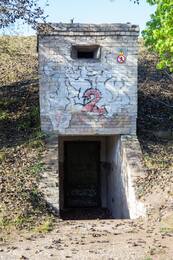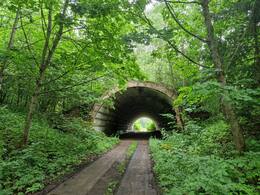Caribbean or Cuban Missile Crisis
IV Soviet Occupation
The Cuban Missile Crisis was a 13-day confrontation between the USSR and Cuba and the United States in October 1962.
It was one of the major confrontations of the Cold War and is generally considered the closest the war came to a nuclear conflict. It began on October 14, 1962, after the discovery of Soviet nuclear missiles in Cuba that could reach the United States. On October 14, the last missiles were delivered, bringing the total number to 42. Together with the bomber and submarine armaments, the total number of nuclear warheads was 160. The crisis ended on October 28, when Soviet leader Nikita Khrushchev ordered the withdrawal of all Soviet nuclear missiles in return for promises from U.S. President John F. Kennedy, Attorney General Robert Kennedy, and Secretary of War Robert McNamara not to attack Cuba. The United States was also forced to withdraw its missiles from Turkey. To prevent similar crises in the future, a direct Moscow-Washington telephone line (the so-called "red telephone") was established. As a result of the crisis, an anti-war movement began to develop in Western countries, to which some Soviet dissidents also expressed similar views.
From the documents preserved in the Latvian State Archives, it can be concluded that in 1962 the Central Committee of the Communist Party of Latvia (CC) and the Council of Ministers of the Latvian SSR (CM) received numerous decisions of the CC of the Communist Party of the USSR and the CM of the USSR on the unwavering implementation of military equipment production plans, the accumulation of mobilization reserves, the preparation of measures to protect against weapons of mass destruction, as well as on the formations of the Ministry of Internal Affairs to be deployed in time of war. However, they seem to have related more to the general preparation of the USSR for the so-called special period, or real hostilities, than to the short-lived Caribbean crisis.
More information sources
Jānis Riekstiņš. On the threat of nuclear war. The Caribbean crisis. LA.LV, October 5, 2012. https://www.la.lv/par-matu-no-kodolkara-kubas-krize-3
Cuban Missile Crisis. Wikipedia. https://lv.wikipedia.org/wiki/Kubas_ra%C4%B7e%C5%A1u_kr%C4%ABze
Category: Cuban Missile Crisis. Wikimedia Commons. https://commons.wikimedia.org/wiki/Category:Cuban_Missile_Crisis
Related objects
Underground Military Bunkers in Valka
The Valka bunkers are located in the centre of the city of Valka, on the left side of Ausekļa street, next to the Ādams Tērauds School. Visitors can only view the bunkers from the outside. The Soviet Army bunkers in Valka were among the most secret places in Soviet Latvia only accessible to people with special permits. From 1953 to 1989, they were home to the Soviet Army’s strategic missile communications reserve. Large 16 wheelers were used to deliver massive reinforced concrete blocks for building the bunkers. Once completed, all three bunkers were covered with gravel for additional reinforcement and insulation. The bunkers housed a strategic missile communications reserve subordinated to the Leningrad Communications Centre. Silos with army missiles were controlled from these bunkers. There were 20 such silos in the Valka and Valga area. In October 1962, during the Cuban Missile Crisis, these missiles were combat-ready and aimed at Florida. Legend has it that they were a couple of hours shy from actually being launched. Right next to the Ādams Tērauds School and the underground bunkers is the Swedish (Sheremetyevo) Fortification. The artificial wall of earth was built at the beginning of the Great Northern War, around 1702, to protect Valka against the Swedes. The steepest wall of the fortification faces the village of Ērģeme, while the other side faces Ausekļa street.
Šateikiai ground missile base
In 1960, the Šateikiai Ground Missile Base was built in the forests adjacent to Šateikiai of Plungė district. It was one of four bases of its kind in Lithuania. Four launching pads for R-12 (SS-4 Sandal) medium-range ballistic missiles had been built at the base. Once the signal was received, the missiles could be fired at the European countries of the NATO bloc.
In 1962, during the Caribbean crisis, nuclear missiles were moved from the Šateikiai missile base to central Cuba. The highest level of alert at this base was declared in 1968 during the Prague Spring – the democratic change in Czechoslovakia. At the time, one of the missiles was aimed at the Federal Republic of Germany because the NATO bloc was likely to support the Czechoslovak rebels with its own weapons.
The Šateikiai base was closed in around 1978 because it was considered obsolete and its maintenance – irrational. The closure was also prompted by the fact that by the 1980s it was clear that US intelligence services had identified the locations of stationary missile launch bases. The abandonment of the missile launch site caused structural damage to buildings. The remains of six reinforced concrete warehouses (hangars) are still present on the grounds of the base, as well as bush-covered surface launching pads for rockets.
Related stories
In the footsteps of nuclear weapons in Šateikiai Forest
In the period 1960-1978, in the forests of Šateikiai village, in the Plungė district, a ground-based missile launch base operated, where medium-range thermonuclear missiles R12U were deployed. After the missiles were transported, the 384th High-Power Artillery Brigade was deployed at the base. At its disposal were self-propelled 203 mm caliber howitzers 2S7 "Pion" and a variety of other weapons, which cost lives.






